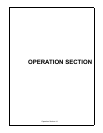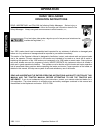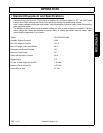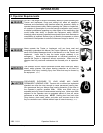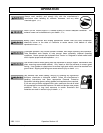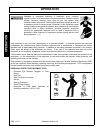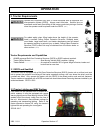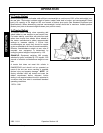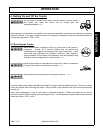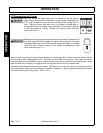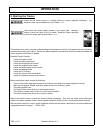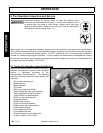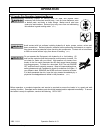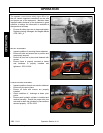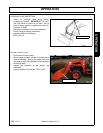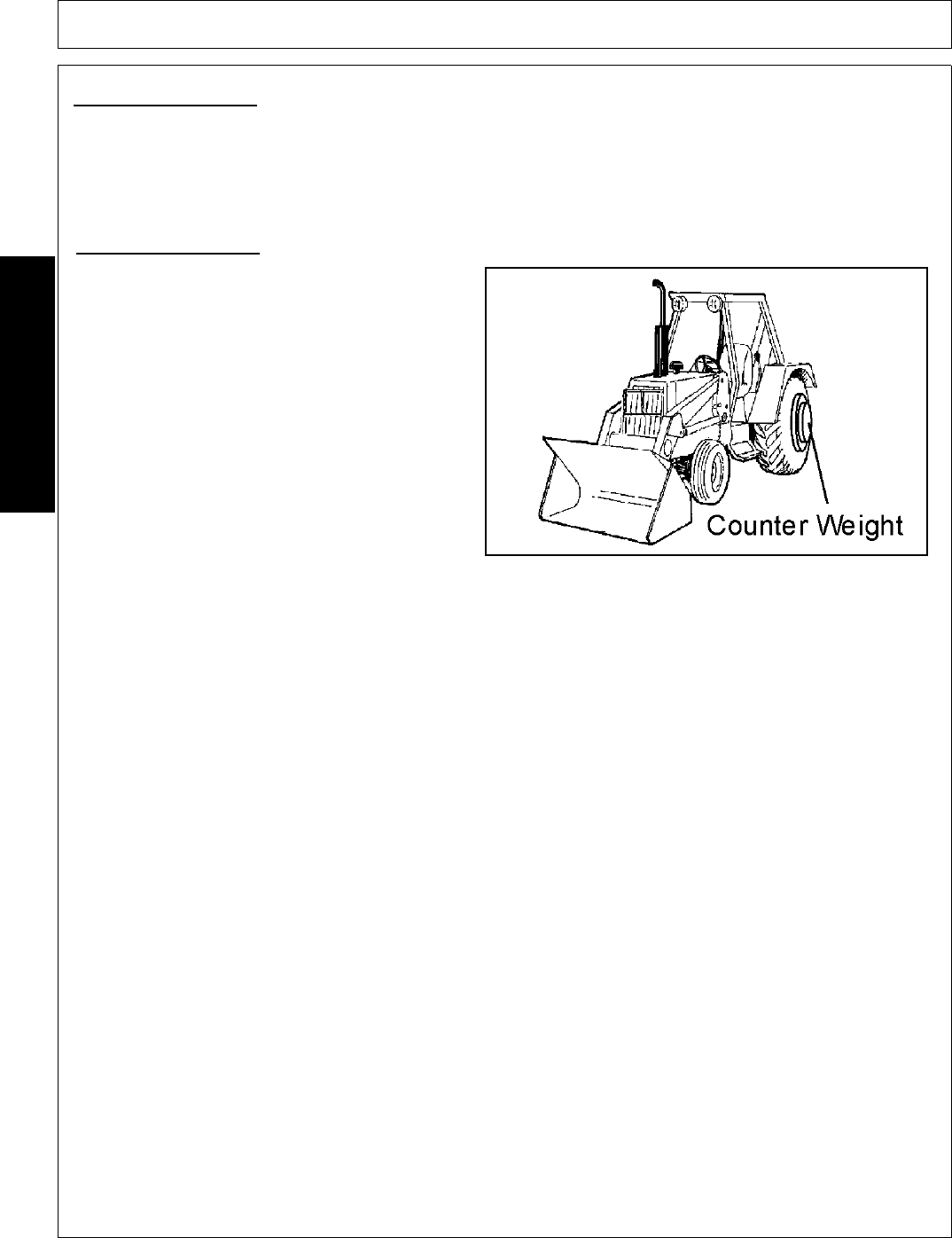
OPERATION
1585 01/11 Operation Section 4-8
© 2010 Alamo Group Inc.
OPERATION
3.3 Tractor Ballast
Before operating tractor and loader, add sufficient counterweight so a minimum of 25% of the total weight is on
the rear axle. Total weight includes weight of tractor, loader, rated load in bucket, and counterweight. Rated
load is lift capacity at full height at 500 mm forward of bucket pivot point (See Standard Equipment and
Specifications). When determining required counterweight, bucket should be at maximum forward position
(bucket pivot point at the same height as boom pivot point on mast).
3.4 Tractor Ballast
To ensure tractor stability when operating add
wheel ballast or rear weights to rear tractor tires.
For better stability, use tractor with wide front axle
rather than tricycle front wheels. Move wheels to
the tractor manufacturer’s widest recommended
settings to increase stability. If 3-Point hitch
counterweights are used, they should be carried
as low as possible at all times to maximize stability.
Effective counterbalance weight at rear axle of
mounted rear equipment is determined by
multiplying actual weight of equipment by 1.50.
EXAMPLE: Equipment weighing 800 pounds,
attached to tractor, multiplied by 1.50, equals 1200
pounds of effective counterbalance weight at rear
axle.
A tractor that does not meet this criteria is
DANGEROUS and should not be operated as
upset of the unit can occur resulting in possible
serious injury and property damage. NOTE: All
factory mounted units are tested and meet the
ballast requirement before shipment; further
testing is not required unless the unit is operated in
a manner other than what is considered standard
operating conditions.
OPS-L- 0001




